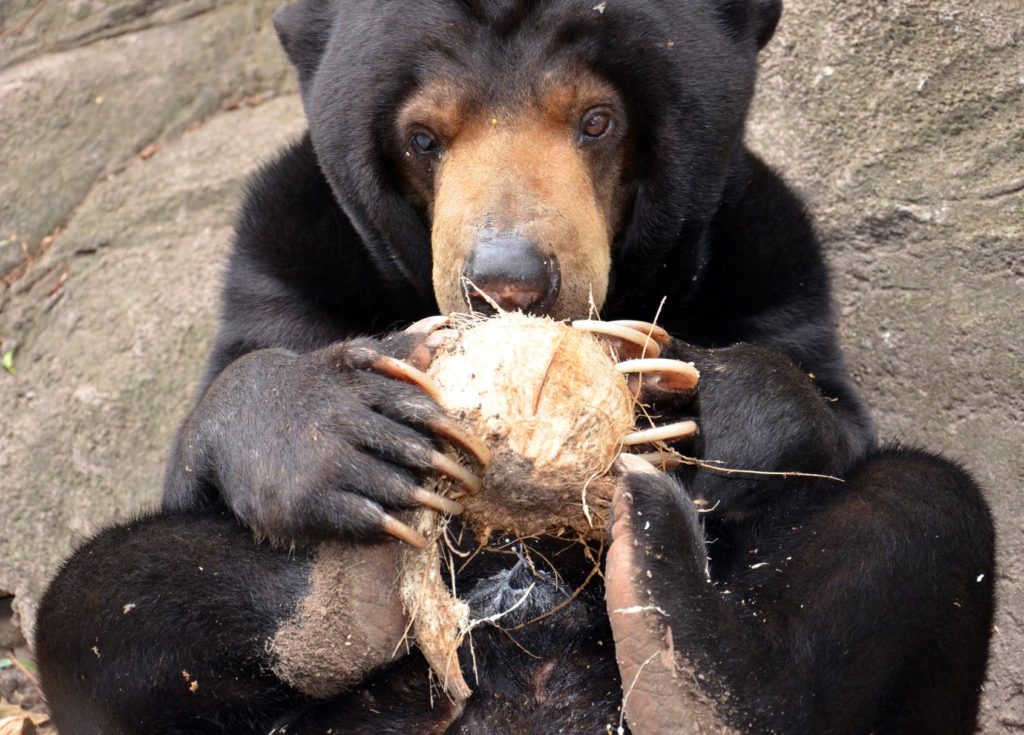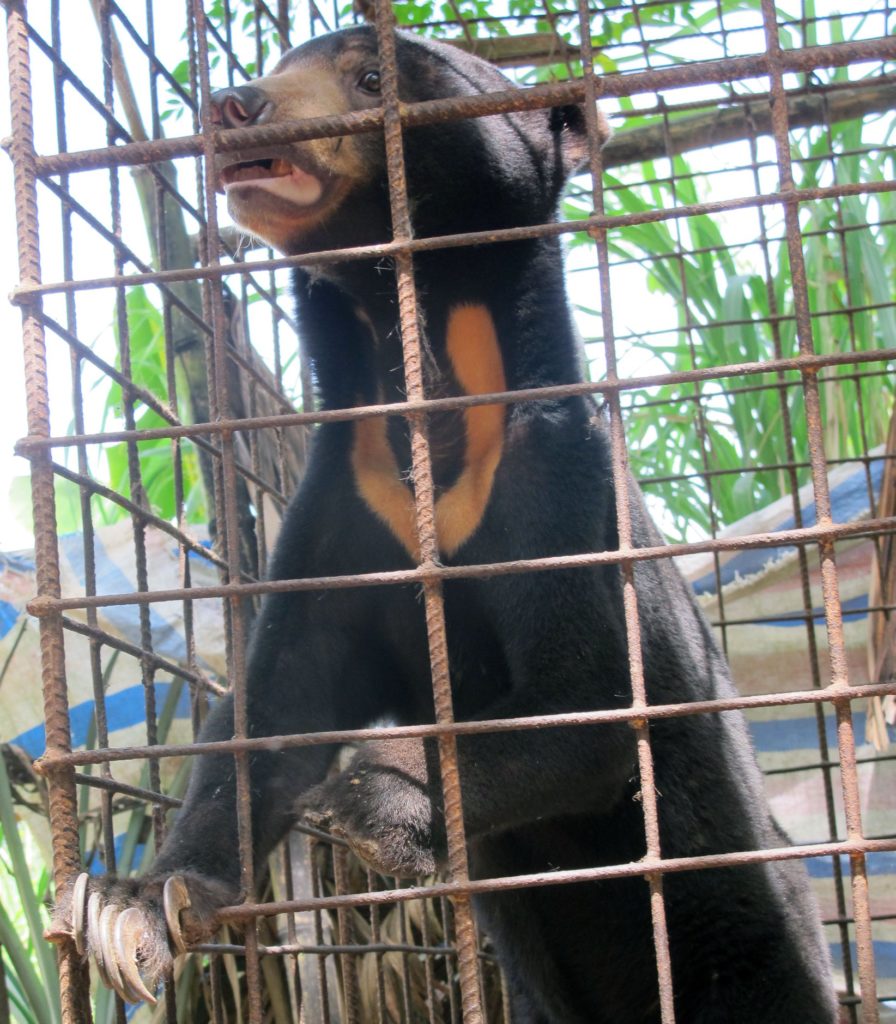Sun bear rescue program
Description
Species name: SUN BEAR
Scientific name: Helarctos malayanus
Country: Laos
Project website: www.freethebears.org
The main threats to the eight bear species on Earth today are habitat loss and poaching, and also climate change for polar bears. There are even more dangers for bears in Asia. In the so-called traditional medicine of the Far East, bile, bear meat, soup or tincture of their paws are supposed to give strength.
The sun bear (Helarctos malayanus) is the smallest bear species in the world, adults can weigh as little as 25 kg (exceptionally 65 kg). They are also one of the least known species. They live in the rainforests of Asia, from the eastern Himalayas through Thailand, Laos, Vietnam, to Sichuan Province in China, and south through Cambodia to Malaysia, Sumatra and Borneo. The sun bear is named so for its characteristic orange to cream coloured, crescent-like chest patch. Their hair is very short because they live in a hot climate.


They are omnivorous. A large role in their diet play fruits, the seeds of which they spread through faeces, honey, insects, including termites and bee larvae. They rarely hunt birds and smaller mammals. To get their main food: fruit and honey they can climb trees very high, using their long and strong claws. Sun bears have an unusually long tongue (up to 25 cm!), which helps them get honey and insects.
The greatest threat to them is poaching, keeping (especially young) as pets, the so-called traditional Chinese medicine; and habitat loss. The International Union for Conservation of Nature (IUCN) has classified the sun bear as vulnerable.
The most drastic example of using bears for the so-called traditional Chinese medicine are bear farms where their bile is obtained. Bears spend years, and often their entire lives, in cages not much larger than themselves. A metal trocar permanently embedded in their bodies, which enables the collection of bile, causes constant pain and endless infections. It is estimated that over 12,000 of these animals live on bear farms.

In Asia, the Free the Bears foundation has been operating since 1995 and it saves sun and Himalayan black bears from poachers, traders and farms. It helps authorities enact and enforce laws to protect endangered animal species, conducts research on wild bears and educational activities. The Foundation has already saved over 900 bears. Currently, 240 bears live in rehabilitation centres in Cambodia, Laos and Vietnam. Their maintenance is extremely costly: first, they require surgery and treatment, then rehabilitation.
What we do
The Dodo Foundation supports the bear rescue project in Laos. It is estimated that there are still over 100 animals on bile farms in this country. They can be taken from the owners because the Lao authorities have banned their activities. The problem is that two of the sanctuaries run by Free the Bears lack new enclosures. The cost of a new, happy home for one bear is PLN 20,000. We want to help build enclosures for bears. We have created a fundraiser for this purpose – click here to open the fundraiser.









